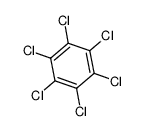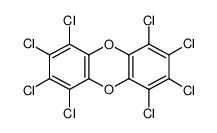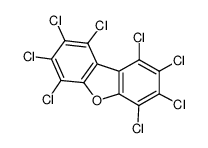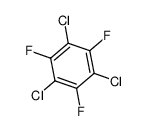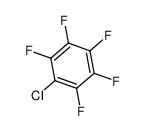| Product name | hexachlorobenzene |
|---|
| Product number | - |
|---|---|
| Other names | Benzene, hexachloro- |
| Identified uses | For industry use only. Pesticides (chemicals used for killing pests, such as rodents, insects, or plants) |
|---|---|
| Uses advised against | no data available |
| Company | MOLBASE (Shanghai) Biotechnology Co., Ltd. |
|---|---|
| Address | Floor 4 & 5, Building 12, No. 1001 North Qinzhou Road, Xuhui District, Shanghai, China |
| Telephone | +86(21)64956998 |
| Fax | +86(21)54365166 |
| Emergency phone number | +86-400-6021-666 |
|---|---|
| Service hours | Monday to Friday, 9am-5pm (Standard time zone: UTC/GMT +8 hours). |
Carcinogenicity, Category 1B
Specific target organ toxicity – repeated exposure, Category 1
Hazardous to the aquatic environment, short-term (Acute) - Category Acute 1
Hazardous to the aquatic environment, long-term (Chronic) - Category Chronic 1
2.2 GHS label elements, including precautionary statements| Pictogram(s) |   |
|---|---|
| Signal word | Danger |
| Hazard statement(s) | H350 May cause cancer H372 Causes damage to organs through prolonged or repeated exposure H410 Very toxic to aquatic life with long lasting effects |
| Precautionary statement(s) | |
| Prevention | P201 Obtain special instructions before use. P202 Do not handle until all safety precautions have been read and understood. P280 Wear protective gloves/protective clothing/eye protection/face protection. P260 Do not breathe dust/fume/gas/mist/vapours/spray. P264 Wash ... thoroughly after handling. P270 Do not eat, drink or smoke when using this product. P273 Avoid release to the environment. |
| Response | P308+P313 IF exposed or concerned: Get medical advice/ attention. P314 Get medical advice/attention if you feel unwell. P391 Collect spillage. |
| Storage | P405 Store locked up. |
| Disposal | P501 Dispose of contents/container to ... |
none
3.Composition/information on ingredients 3.1 Substances| Chemical name | Common names and synonyms | CAS number | EC number | Concentration |
|---|---|---|---|---|
| hexachlorobenzene | hexachlorobenzene | 118-74-1 | none | 100% |
Consult a physician. Show this safety data sheet to the doctor in attendance.
If inhaledFresh air, rest. Refer for medical attention.
In case of skin contactRinse and then wash skin with water and soap. Refer for medical attention .
In case of eye contactFirst rinse with plenty of water for several minutes (remove contact lenses if easily possible), then refer for medical attention.
If swallowedRinse mouth. Refer for medical attention .
4.2 Most important symptoms/effects, acute and delayedHarmful by dust inhalation or if swallowed. Irritating to eyes, skin and mucous membranes. Prolonged periods of ingestion may cause cutaneous porphyria. (USCG, 1999)
4.3 Indication of immediate medical attention and special treatment needed, if necessaryImmediate first aid: Ensure that adequate decontamination has been carried out. If patient is not breathing, start artificial respiration, preferably with a demand-valve resuscitator, bag-valve-mask device, or pocket mask, as trained. Perform CPR as necessary. Immediately flush contaminated eyes with gently flowing water. Do not induce vomiting. If vomiting occurs, lean patient forward or place on left side (head-down position, if possible) to maintain an open airway and prevent aspiration. Keep patient quiet and maintain normal body temperature. Obtain medical attention. /Lindane and related compounds/
5.Fire-fighting measures 5.1 Extinguishing media Suitable extinguishing mediaUse water spray, foam, powder, carbon dioxide.
5.2 Specific hazards arising from the chemicalSpecial Hazards of Combustion Products: They contain highly toxic chloride fumes. Behavior in Fire: Produces highly toxic chloride fumes. (USCG, 1999)
5.3 Special protective actions for fire-fightersWear self-contained breathing apparatus for firefighting if necessary.
6.Accidental release measures 6.1 Personal precautions, protective equipment and emergency proceduresUse personal protective equipment. Avoid dust formation. Avoid breathing vapours, mist or gas. Ensure adequate ventilation. Evacuate personnel to safe areas. Avoid breathing dust. For personal protection see section 8.
6.2 Environmental precautionsPersonal protection: chemical protection suit and particulate filter respirator adapted to the airborne concentration of the substance. Sweep spilled substance into sealable containers. Carefully collect remainder. Then store and dispose of according to local regulations. Do NOT let this chemical enter the environment.
6.3 Methods and materials for containment and cleaning upAbsorb the spills with paper towels or like materials. Place in hood to evaporate followed by burning the towel. Dissolve in a combustible solvent. Scatter the spray of the solution into the furnace with after burners and alkali scrubber.
7.Handling and storage 7.1 Precautions for safe handlingAvoid contact with skin and eyes. Avoid formation of dust and aerosols. Avoid exposure - obtain special instructions before use.Provide appropriate exhaust ventilation at places where dust is formed. For precautions see section 2.2.
7.2 Conditions for safe storage, including any incompatibilitiesSeparated from food and feedstuffs. Well closed.Separated from food and feedstuffs. Well closed.
8.Exposure controls/personal protection 8.1 Control parameters Occupational Exposure limit valuesno data available
Biological limit valuesno data available
8.2 Appropriate engineering controlsHandle in accordance with good industrial hygiene and safety practice. Wash hands before breaks and at the end of workday.
8.3 Individual protection measures, such as personal protective equipment (PPE) Eye/face protectionSafety glasses with side-shields conforming to EN166. Use equipment for eye protection tested and approved under appropriate government standards such as NIOSH (US) or EN 166(EU).
Skin protectionWear impervious clothing. The type of protective equipment must be selected according to the concentration and amount of the dangerous substance at the specific workplace. Handle with gloves. Gloves must be inspected prior to use. Use proper glove removal technique(without touching glove's outer surface) to avoid skin contact with this product. Dispose of contaminated gloves after use in accordance with applicable laws and good laboratory practices. Wash and dry hands. The selected protective gloves have to satisfy the specifications of EU Directive 89/686/EEC and the standard EN 374 derived from it.
Respiratory protectionWear dust mask when handling large quantities.
Thermal hazardsno data available
9.Physical and chemical properties| Physical state | white powder |
|---|---|
| Colour | White needles |
| Odour | no data available |
| Melting point/ freezing point | 228-231ºC |
| Boiling point or initial boiling point and boiling range | 332ºC |
| Flammability | Combustible. |
| Lower and upper explosion limit / flammability limit | no data available |
| Flash point | 242ºC |
| Auto-ignition temperature | no data available |
| Decomposition temperature | no data available |
| pH | no data available |
| Kinematic viscosity | no data available |
| Solubility | less than 1 mg/mL at 20°C |
| Partition coefficient n-octanol/water (log value) | log Kow = 5.73 |
| Vapour pressure | 0.000463mmHg at 25°C |
| Density and/or relative density | 1.5691 |
| Relative vapour density | 9.8 (Relative to Air) |
| Particle characteristics | no data available |
no data available
10.2 Chemical stabilityVery stable, even to acids and bases.
10.3 Possibility of hazardous reactionsNot flammable or combustible.HEXACHLOROBENZENE reacts violently with dimethylformamide. .
10.4 Conditions to avoidno data available
10.5 Incompatible materialsDIMETHYL FORMAMIDE AND HEXACHLOROBENZENE REACT VIOLENTLY ABOVE 65 DEG C.
10.6 Hazardous decomposition productsDangerous; When heated to decomposition, emits toxic fumes of /hydrogen chloride/.
11.Toxicological information Acute toxicity- Oral: LD50 Rat oral 3500 mg/kg
- Inhalation: no data available
- Dermal: no data available
no data available
Serious eye damage/irritationno data available
Respiratory or skin sensitizationno data available
Germ cell mutagenicityno data available
CarcinogenicityNTP: Reasonably anticipated to be a human carcinogen
Reproductive toxicityOne human study reported abnormal physical development in young children who ingested contaminated bread during a 4-year poisoning incident. Hexachlorobenzene has been found to decrease the survival rates of newborn animals and to cross the placenta and accumulate in fetal tissue in several animal species. Neurological, teratogenic, liver, and immune system effects have been reported in the offspring of animals orally exposed to hexachlorobenzene while they were pregnant.
STOT-single exposureno data available
STOT-repeated exposureno data available
Aspiration hazardno data available
12.Ecological information 12.1 Toxicity- Toxicity to fish: LC50; Species: Pimephales promelas (fathead minnow) weight 0.7 g; Conditions: static bioassay, 20°C; Concentration: 22 mg/L for 96 hr @ 20°C (95% confidence limit) /technical 80-96%
- Toxicity to daphnia and other aquatic invertebrates: no data available
- Toxicity to algae: no data available
- Toxicity to microorganisms: no data available
Little to no biodegradation was noted in biodegradation screening tests(1,3,4), in activated sludge(2,5), or in soil(6-8). Measurement of CO2 evolution from suspended soil cultures over a 14-day incubation period were as follows: 0.4% under aerobic conditions, 0.2% under anaerobic conditions(9).
12.3 Bioaccumulative potentialBCF values of 2,700 to 4,800 were measured in carp exposed to 10 ug/L of hexachlorobenzene during an 8 week incubation period and BCF values of 1,600 to 3,900 were measured in carp exposed to 1 ug/L of hexachlorobenzene during an 8 week incubation period(1). Log BCF values in rainbow trout (Salmo gairdneri) were given as 3.7-4.3(2-4) and in fathead minnows (Pimephales promelas) and sunfish (Lepomis cyanellus) log BCF values of 4.21 and 4.34, respectively, were reported(3). After an 8-week exposure period of carp (Cyprinus carpio) to concentrations of 0.5 and 0.05 ug/L of hexachlorobenzene, the BCFs were 11,000-27,000 and 6,000-30,000, respectively(5). According to a classification scheme(6), these BCF values suggest that bioconcentration in aquatic organisms is very high, provided the compound is not metabolized by the organism(SRC).
12.4 Mobility in soilA log Koc value of 5.5 (Koc of 3.2X10+5) was reported for hexachlorobenzene in freshwater river sediment(1). A log Koc value of 4.9 (Koc of 7.9X10+4) was reported for hexachlorobenzene in sediment obtained from the Ise Bay, Japan(2). Measured log Koc values of 3.6 (Koc of 4X10+3)(3) and 4.0 (Koc of 1X10+4)(4) were reported in soils. Log Koc values of 6.42 and 5.56 (Koc values of 2.6X10+6 and 3.6X10+5) were determined for two sediment layers from a lake(5). Hexachlorobenzene has measured log Koc value of 3.99 (Koc of 9.8X10+3) reported for soils(6). Hexachlorobenzene was found to desorb very slowly from sediment in water(7). According to a recommended classification scheme(8), these Koc values suggest that hexachlorobenzene is expected to be immobile in soil(SRC).
12.5 Other adverse effectsno data available
13.Disposal considerations 13.1 Disposal methods ProductThe material can be disposed of by removal to a licensed chemical destruction plant or by controlled incineration with flue gas scrubbing. Do not contaminate water, foodstuffs, feed or seed by storage or disposal. Do not discharge to sewer systems.
Contaminated packagingContainers can be triply rinsed (or equivalent) and offered for recycling or reconditioning. Alternatively, the packaging can be punctured to make it unusable for other purposes and then be disposed of in a sanitary landfill. Controlled incineration with flue gas scrubbing is possible for combustible packaging materials.
14.Transport information 14.1 UN Number| ADR/RID: UN2729 | IMDG: UN2729 | IATA: UN2729 |
| ADR/RID: HEXACHLOROBENZENE |
| IMDG: HEXACHLOROBENZENE |
| IATA: HEXACHLOROBENZENE |
| ADR/RID: 6.1 | IMDG: 6.1 | IATA: 6.1 |
| ADR/RID: III | IMDG: III | IATA: III |
| ADR/RID: yes | IMDG: yes | IATA: yes |
no data available
14.7 Transport in bulk according to Annex II of MARPOL 73/78 and the IBC Codeno data available
15.Regulatory information 15.1 Safety, health and environmental regulations specific for the product in question| Chemical name | Common names and synonyms | CAS number | EC number |
|---|---|---|---|
| hexachlorobenzene | hexachlorobenzene | 118-74-1 | none |
| European Inventory of Existing Commercial Chemical Substances (EINECS) | Listed. | ||
| EC Inventory | Listed. | ||
| United States Toxic Substances Control Act (TSCA) Inventory | Listed. | ||
| China Catalog of Hazardous chemicals 2015 | Listed. | ||
| New Zealand Inventory of Chemicals (NZIoC) | Not Listed. | ||
| Philippines Inventory of Chemicals and Chemical Substances (PICCS) | Listed. | ||
| Vietnam National Chemical Inventory | Not Listed. | ||
| Chinese Chemical Inventory of Existing Chemical Substances (China IECSC) | Listed. | ||
| Creation Date | Aug 15, 2017 |
|---|---|
| Revision Date | Aug 15, 2017 |
- CAS: Chemical Abstracts Service
- ADR: European Agreement concerning the International Carriage of Dangerous Goods by Road
- RID: Regulation concerning the International Carriage of Dangerous Goods by Rail
- IMDG: International Maritime Dangerous Goods
- IATA: International Air Transportation Association
- TWA: Time Weighted Average
- STEL: Short term exposure limit
- LC50: Lethal Concentration 50%
- LD50: Lethal Dose 50%
- EC50: Effective Concentration 50%
- IPCS - The International Chemical Safety Cards (ICSC), website: http://www.ilo.org/dyn/icsc/showcard.home
- HSDB - Hazardous Substances Data Bank, website: https://toxnet.nlm.nih.gov/newtoxnet/hsdb.htm
- IARC - International Agency for Research on Cancer, website: http://www.iarc.fr/
- eChemPortal - The Global Portal to Information on Chemical Substances by OECD, website: http://www.echemportal.org/echemportal/index?pageID=0&request_locale=en
- CAMEO Chemicals, website: http://cameochemicals.noaa.gov/search/simple
- ChemIDplus, website: http://chem.sis.nlm.nih.gov/chemidplus/chemidlite.jsp
- ERG - Emergency Response Guidebook by U.S. Department of Transportation, website: http://www.phmsa.dot.gov/hazmat/library/erg
- Germany GESTIS-database on hazard substance, website: http://www.dguv.de/ifa/gestis/gestis-stoffdatenbank/index-2.jsp
- ECHA - European Chemicals Agency, website: https://echa.europa.eu/





